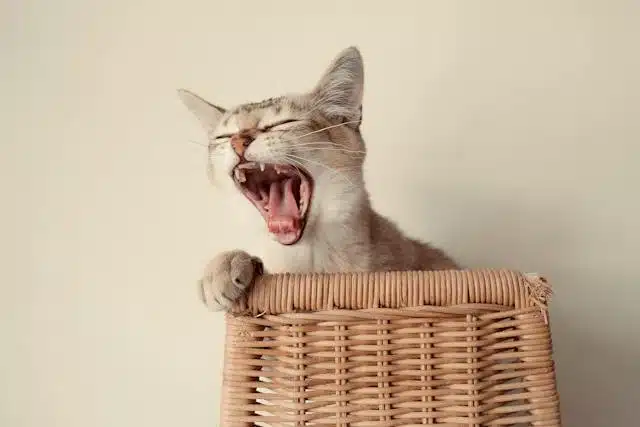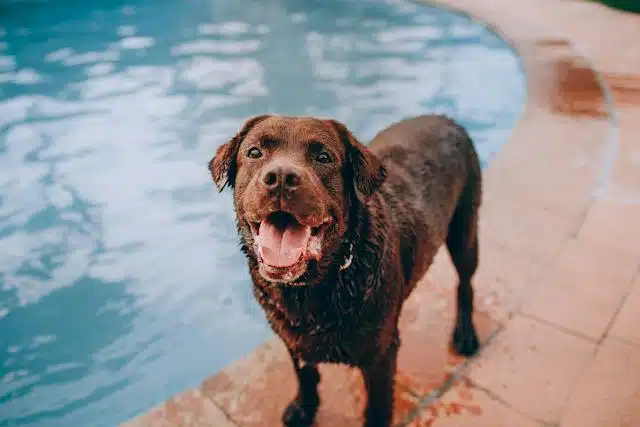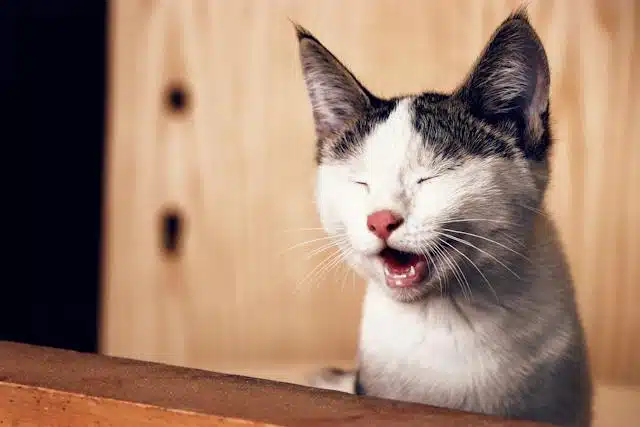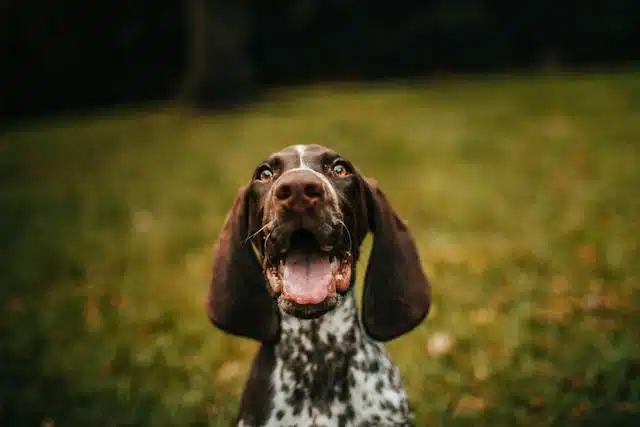Home » Blog » Pet » Pet Health & Safety » Pee-yoo! Why You Shouldn’t Ignore Your Pet’s Bad Breath
Categories
Tags
animal welfare
breed profile
buying a car
buying a pet
Car
car accessories
car care
car features
car insurance
Car safety
car sales
car service
cat
cat behaviour
cat body language
Cat Breeds
cat food
cat insurance
comprehensive car insurance
Dog
Dog Behaviour
dog body language
Dog Breeds
dog food
Dog Insurance
dog training
eco friendly cars
Kitten
New Car
pet accessories
pet activities
Pet Adoption
pet breeders
pet days of the year
pet fun stuff
Pet Health
pet insurance
pet parenting
Pet Safety
pet services
Puppy
rescue pets
road safety
road trip
safe driving
Recent Blog:
Facebook Posts
1 day ago
Growing old sometimes means we can’t take care of pets anymore. Find out some advice on what to do when this happens:![]()
![]() Senior Pet Parents – Contingency Plans for Your Pet – bit.ly/44bzwkS
... See MoreSee Less
Senior Pet Parents – Contingency Plans for Your Pet – bit.ly/44bzwkS
... See MoreSee Less
Senior Pet Parents' Contingency Plans for Pets
www.pd.com.au
Sometimes senior pet parents need more downtime. For older pet owners, this can be tricky to navigate if their dog or cat is full of beans and wants to3 days ago
Before you rev up the engine, let’s run through a checklist of things to do before starting your car. Not only do these steps ensure your safety (and that of others around you), but they also help in maintaining your vehicle's longevity.![]()
![]() Driving Tips: Your Checklist Before Starting Your Car -
... See MoreSee Less
Driving Tips: Your Checklist Before Starting Your Car -
... See MoreSee Less
Driving Tips: Your Checklist Before Starting Your Car
www.pd.com.au
Heading out for a drive? Hold up a second! Whether you're dashing off to work, running errands, or embarking on a road trip adventure, there are a few1 week ago
Are intestinal worms setting up camp in your dog’s gut without paying rent? Here’s how to spot the main culprits and get rid of them too:![]()
![]() Preventing, Identifying and Treating Intestinal Worms in Dogs - bit.ly/43YjCKu
... See MoreSee Less
Preventing, Identifying and Treating Intestinal Worms in Dogs - bit.ly/43YjCKu
... See MoreSee Less
Preventing, Identifying and Treating Intestinal Worms in Dogs
www.pd.com.au
Intestinal worms, such as roundworms in dogs are one of the least glamorous topics on the planet. These intestinal parasites that basically use our dogsYikes! Is your dog’s or cat’s bad breath sending you for the hills? Research shows that over 80% of dogs and 70% of cats have dental disease by 3 years of age. Pet dental hygiene is a big issue – and bad breath shouldn’t be ignored.
In this article, we pinch our noses and leap into the causes of bad breath, why it’s so important to find out why it’s happening as soon as possible, and how to treat it. No going back now!
In this article

Why does my dog/cat have bad breath?
Your dog or cat might have bad breath if they’ve eaten something yucky, but if it’s a persistent problem you need to get it checked out. Here are some possible causes:
Dental/gum disease
Bad breath in your dog or cat, medically known as halitosis, could mean that there’s something not quite right with their health.
The most common culprit is dental or gum disease. Just like in humans, plaque and tartar can build up on your pet’s teeth, leading to bad breath. If the plaque isn’t regularly removed, it can harden into tartar, potentially causing gingivitis (inflammation of the gums), tooth decay, or a tooth abscess.
Underlying health issues
But it’s not just dental issues that can lead to bad breath. Sometimes, persistent bad breath can signal more serious health problems elsewhere in the body, such as infections in the respiratory system, gastrointestinal tract, or organs like the liver or kidneys. Diabetes in dogs and cats is another disease that can cause bad breath.
Their food
In some cases, the food your pet eats can also contribute to unpleasant breath. For example, certain diets or food items might not digest well, leading to bad breath as a side effect. That’s why good cat and dog gut health is so important.

How to get rid of bad dog and cat breath fast
Getting rid of your cat or dog’s bad breath is all dependent on what caused it. If you’ve confirmed what’s causing the yucky smell, you can treat the issue with a few simple steps:
Brush, brush, brush!
First off, give their teeth a good clean. Brushing their pearly whites can significantly reduce cat/dog bad breath. Use a pet-specific toothbrush and toothpaste – never use human toothpaste as it’s harmful to animals
We’ve got two handy guides for more on this:
Change their food
Next, consider their diet. Sometimes, what they eat is the culprit. Giving your pet healthy food should be helping them live healthier, longer lives.
We have a great article on choosing individualised science-backed cat and dog food. In it we also discuss the fifth vital sign – a nutrition assessment developed as part of a routine veterinary pet health check. Check it out, here: Why the Fifth Vital Sign is Key to Pet Nutrition.
Consider water additives
Water additives are another quick fix. They’re like mouthwash for dogs and can be added to your dog’s water bowl to freshen breath. Just make sure you choose a product specifically designed for dogs or cats.
Keep them out of the garbage!
Lastly, keep an eye on what they’re snacking on outside. It’s a stinky truth that dogs and cats can have a habit of eating things we wish they wouldn’t, which can lead to yucky breath.
Banish bad cat/dog bad breath with chews
Chewing is a natural way for pets to clean their teeth. Offer your pet chew toys or dental chews. These not only keep them busy but also help scrape away plaque and tartar build-up.
Speaking of chews, check out the below video from Dr Cath Watson, Kiwi vet, Healthy Pets New Zealand Chair, and a proud PD contributor, on rawhide chews for dogs:
Cat and dog bad breath – pet dental hygiene to help
As mentioned, it’s important to not ignore cat/dog bad breath, as it’s often a sign that they need a checkup from the vet.
Pet dental hygiene is all about taking care of your furry friend’s teeth and gums, just like how we look after our own dental health. You know how it’s super important for us to brush our teeth, floss, and visit the dentist regularly? Well, it’s pretty much the same for pets! In fact, it should be a part of your routine pet care – just like vaccinations and worming.
When we talk about pet dental hygiene, we’re mainly focusing on keeping their teeth clean and free from yucky stuff like plaque and tartar.
But it’s not just about the teeth. Good pet dental hygiene also means keeping an eye on their gums. Healthy gums should be nice and pink, not red or swollen. And let’s not forget about regular check-ups with the vet, who can spot any dental issues early on and give your pet the best care.

Pet insurance with dental benefits
Treating serious dental conditions linked to cat/dog bad breath can be costly – which is why it’s so important to have a good pet insurance plan to offer you a soft landing. Does your pet insurance cover dental? It’s worth checking out our piece “Pet Dental Insurance: What’s Covered and What’s Not?” for more on this.
PD Insurance’s Deluxe dog insurance and cat insurance policy includes cover (up to the defined benefit limit) for:
- Abscesses
- Gingivitis
- Tooth removal where medically required, for:
– Cavities
– Tooth fracture
– Dental disease as a result of infection
– Retained deciduous teeth
Why not get a quick quote today? We’re pretty sure our rates will leave you with a toothy grin.
Share On:




